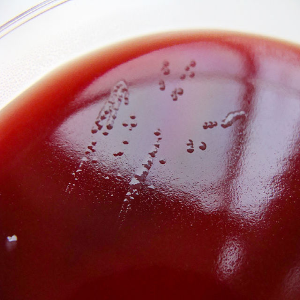Comparison of the Etest and Sensititre methods for anaerobe susceptibility testing

Accepted: 17 February 2023
HTML: 38
All claims expressed in this article are solely those of the authors and do not necessarily represent those of their affiliated organizations, or those of the publisher, the editors and the reviewers. Any product that may be evaluated in this article or claim that may be made by its manufacturer is not guaranteed or endorsed by the publisher.
Authors
Background and Aims: Antimicrobial susceptibility testing of anaerobic clinical isolates is of paramount importance for patient therapy and resistance monitoring. In our laboratory the MIC gradient Etest method and broth microdilution with Sensititre trays are used for susceptibility testing of anaerobes and the aim of this study was to compare the two methods on a panel of anaerobes routinely isolated from patients in the province of Bolzano, Italy. Materials and Methods: Totally, 74 non-repetitive Gram-positive and Gram-negative patient isolates were tested with Etest strips on Fastidious Anaerobe Agar (F.A.A.) and with Sensititre trays, according to manufacturer’s instructions. Interpretation of MICs was by EUCAST or CLSI criteria, resistance percentages were calculated and Categorical Agreement (CA) and Essential Agreement (EA) between the two methods were determined. Results: Of the 74 isolates, 68 (91.9%) grew on both systems and agreement for these was compared in the study. CA for all isolates was ≥90% for all tested antibiotics except moxifloxacin, whereas EA was generally lower. Resistance was generally low, except for clindamycin in all isolates and tigecycline in Gram-negatives. In our study Etest was a superior and more handy method. Conclusions: To conclude, we believe the Etest method is more suitable for routine diagnostic laboratory usage. Nevertheless, multicenter studies are required to evaluate the two methods for anaerobic susceptibility testing.
How to Cite

This work is licensed under a Creative Commons Attribution-NonCommercial 4.0 International License.
PAGEPress has chosen to apply the Creative Commons Attribution NonCommercial 4.0 International License (CC BY-NC 4.0) to all manuscripts to be published.

 https://doi.org/10.4081/mm.2023.11056
https://doi.org/10.4081/mm.2023.11056



